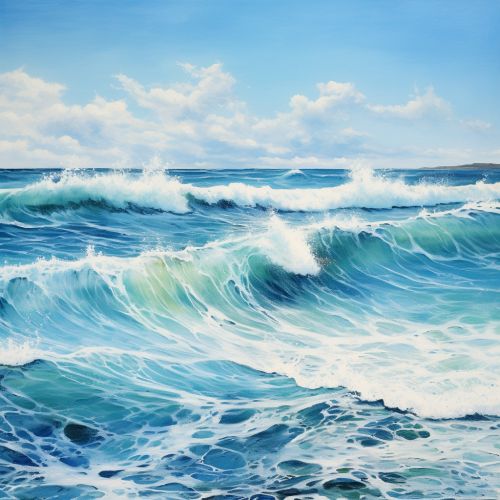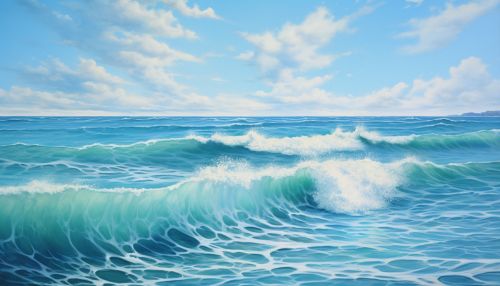Physical Oceanography
Introduction
Physical oceanography is the study of physical conditions and physical processes within the ocean, especially the motions and physical properties of ocean waters. It is one of the sub-fields of oceanography and involves the exploration and study of the world's oceans, their processes, and phenomena.
Oceanic Processes
Oceanic processes are the phenomena that occur within the ocean waters. These include ocean circulation, waves, tides, and currents. These processes are driven by a variety of factors, including the Earth's rotation, wind, temperature, and salinity differences.


Ocean Circulation
Ocean circulation is the large scale movement of waters in the ocean basins. It is primarily driven by the wind and the thermohaline circulation, which is the deep part of the oceanic mass transport circulation. Thermohaline circulation is driven by density gradients due to variations in temperature and salinity.
Ocean Waves
Ocean waves are the surface waves that occur on the free surface of the oceans. They result from the wind blowing across the surface of the ocean and represent a transfer of energy from the wind to the ocean surface. Ocean waves have significant impacts on the shaping of coastlines and coastal processes.
Tides
Tides are the rise and fall of sea levels caused by the combined effects of gravitational forces exerted by the moon, sun, and the rotation of the Earth. The times and amplitude of tides at a locale are influenced by the alignment of the Sun and Moon, by the pattern of tides in the deep ocean, and by the shape of the coastline and near-shore bathymetry.
Ocean Currents
Ocean currents are the continuous, directed movement of ocean water generated by a number of forces acting upon the water, including wind, the Coriolis effect, breaking waves, cabbeling, and temperature and salinity differences. They transport large amounts of water and heat around the globe and significantly influence the Earth's climate.
Ocean Properties
The ocean has unique physical properties that set it apart from other parts of the Earth's system. These include salinity, temperature, density, and pressure. These properties not only determine the state of the ocean but also influence its interactions with the atmosphere and the biosphere.
Salinity
Salinity is the saltiness or dissolved salt content of a body of water. It is a fundamental property of ocean water and is one of the basic variables used in physical oceanography. Salinity influences the ocean's density, which in turn influences the ocean circulation.
Temperature
The temperature of ocean water varies greatly depending on depth and latitude. Surface temperatures can range from -2°C to 30°C, while deep water, below about 1000 m, is remarkably constant, with temperatures ranging from about 0°C to 3°C. The ocean's temperature structure affects its circulation and the global climate.
Density
The density of ocean water is determined by its salinity and temperature. It plays a crucial role in the ocean's circulation by driving the thermohaline circulation. Density differences between water masses lead to stratification and influence the vertical mixing of ocean waters.
Pressure
The pressure in the ocean increases with depth. This is due to the weight of the water above pressing down on the water below. The increase in pressure with depth affects the physical properties of seawater and has implications for oceanic and atmospheric circulation.
Interaction with the Atmosphere
The ocean and the atmosphere are interconnected, with each influencing the other. This interaction is a critical part of the Earth's climate system. The ocean absorbs heat from the atmosphere and transports it from the equator to the poles, moderating the Earth's climate.
Conclusion
Physical oceanography is a vital field of study that helps us understand the world's oceans, their processes, and their interactions with other parts of the Earth's system. It provides valuable insights into climate change, sea-level rise, and other critical environmental issues.
